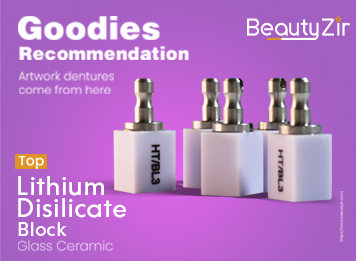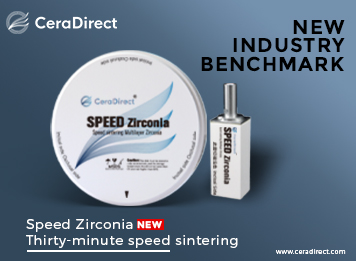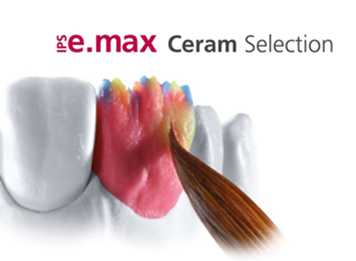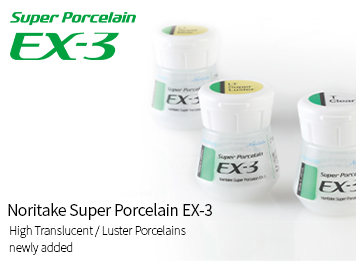
When addressing this issue, we must understand that a model is not equivalent to the oral cavity. Dental technicians work on the model to create restorations, meaning they are only responsible for the model, not the patient’s oral cavity. However, the dentist bears medical responsibility for the patient’s oral cavity. The main causes of high occlusion are incorrect jaw relationships or deformed impressions. This involves both clinical and technical aspects (of course, the situation with fixed restorations differs from that with removable dentures).

I. Clinical Aspects
– Impression deformation involves several factors:
– When mixing impression material, the powder-to-liquid ratio is not measured.
– When mixing plaster, the powder-to-liquid ratio is not measured.
– Incorrect technique in taking impressions.
– Not pouring plaster into the impression immediately.
– The impression should be soaked in a setting solution for 5 minutes before pouring plaster to accelerate curing.
– After pouring plaster, the impression should not be inverted until the plaster sets.
– After pouring plaster, the impression should be placed in a 100% humidified chamber until the plaster sets.
**Note:** Before pouring plaster, use an air gun to remove moisture from the impression’s tissue surface to prevent unclear gingival margins in the model.
In principle, technicians should not adjust the gingival margins downward. Sometimes, if the dentist over-prepares a shoulder on the abutment, it could result in a restoration that fits the model but not the oral cavity. If modifications to the gingival margin on the plaster (working) model are needed, the dentist should perform these adjustments before handing it to the technician. Dentists should not be negligent here; otherwise, if a poor restoration is placed in the patient’s mouth, leading to secondary caries or occlusal trauma, the dentist will bear all medical responsibility, whereas the technician is not liable.
When unclear gingival margins are encountered, the dentist should use a fine mechanical pencil to redraw the margin line on the abutment model.
It is advisable to use extra-hard plaster for the working model and hard plaster for the opposing model.
– Determining jaw relationships:
– Clinically, high-hardness, appropriately elastic materials should be used for wax bite records, especially in cases of terminal free-end occlusion. The use of baseplate wax is generally not recommended.

II. Technical Aspects
– Examination of Models and Jaw Relationships Before Mounting on the Articulator:
– When the intercuspal position is clear, remove any bubbles from the working and opposing models before mounting to ensure tight occlusal interlocking.
– When the intercuspal position is unclear:
– Generally, do not use wax bite records to mount the articulator except in cases of terminal free-end occlusion. Instead, draw alignment lines based on the wax bite record on both models, remove the record, and mount according to the lines.
– For cases with significant occlusal wear, where determining the jaw relationship is difficult, the dentist should mark the alignment lines.
– Mounting on the Articulator:
– **Choosing the Articulator:**
– For any restoration, an average-value articulator with a guide pin and guide table is necessary. Given the local context, using semi-adjustable or fully adjustable articulators is neither significant nor practical. Over time, the joints of domestic 741 articulators become loose, leading to errors; hence, I do not use them. Simple hinge articulators, dating back 200 years, lack a guide pin and guide table, resulting in poor occlusal precision and are not recommended unless one is fond of antiques. In recent years, European brands like Girbach, Kavo, Ivoclar, and Japanese brands like Morita, YDM, and Shofu have developed high-performance, precise articulators. These are indeed very useful, but most are either too expensive (not offering value for money) or not available in the Chinese market. However, I highly recommend the YDM articulator from Japan for the following reasons:
– Each unit is priced around 1000 RMB, about one-third the cost of a Girbach articulator of similar type, yet with comparable functionality.
– Being a magnetic retention articulator with ten iron plates included, it can simultaneously mount five models, increasing efficiency for large-scale production.
– The articulator has a large working field and high vertical clearance, making it suitable for all restorations, including implants.
– It has a good surface coating that prevents plaster adhesion, and plaster can easily be wiped off with a white cloth, reducing rust risk.
– It has a stacking feature for space-saving storage after work.
– A place for staff name tags is reserved.
– It can accommodate a facebow. YDM’s 50-year history in articulator production ensures successful design and accuracy in the condylar structure. Its only drawback is that slightly more plaster is required for upper mounting. For full dentures, where embedding is easier with lower vertical clearance, Shofu’s Handy2 articulator is also a correct choice for its value (around 1000 RMB).
Steps and Precautions for Mounting on the Articulator:
– When using an occlusal plane plate, tighten all joints and return the guide pin to zero. Position the maxillary model correctly, place sticky wax at the areas corresponding to the maxillary second molars to prevent movement, mix and pour plaster (to minimize setting expansion and prevent model shifting, mix the plaster to a thinner consistency), secure the maxillary and mandibular bases with rubber bands, ensure the guide pin contacts the guide table, remove excess plaster, and wait for full set.
– Without the occlusal plane: Tighten all joints and return the guide pin to zero, align the maxillary and mandibular models based on alignment lines, secure with matchsticks or pins (three or four points) to maintain position during mounting, mix and pour plaster, secure the guide pin to the articulator post with rubber bands to create an imaginary occlusal plane, adjust the mandibular model height to align the maxillary occlusal plane with the rubber band, wait for the plaster to initially set, mix and pour plaster again to secure the maxillary model, secure with rubber bands, ensure the guide pin contacts the guide table, remove excess plaster, and wait for full set.
– After the plaster is fully set, remove the rubber bands and check if the guide pin contacts the guide table. If not, remount the articulator.
– Wax Patterns:
– Apply a thin layer of baby powder on the occlusal surface of the wax pattern to check the occlusal condition of the restoration. The occlusal surface of the restoration should ideally form point contacts and maintain correct A/B/C occlusal contact points with the opposing teeth, which means two points for functional cusps and one point for non-functional cusps. Ensure that in the intercuspal position, the guide pin contacts the guide table.

– Grinding:
– Follow the same procedures as above.
By following the aforementioned steps, high occlusion in initial fixed restorations can be prevented. For removable partial dentures, occlusal height increase and deformation after resin polymerization due to shrinkage are inevitable. Therefore, the polymer should be adjusted on the articulator to eliminate premature contacts and occlusal interferences before polishing.
For dentists who frequently encounter high occlusion issues, the key lies in better communication with technicians. My suggestion is to have the technicians check the occlusal condition on the articulator after mounting, and place the denture on the articulator for inspection upon delivery. This way, through mutual communication, many misunderstandings can be avoided. Otherwise, there really are no other solutions.




Leave a Reply